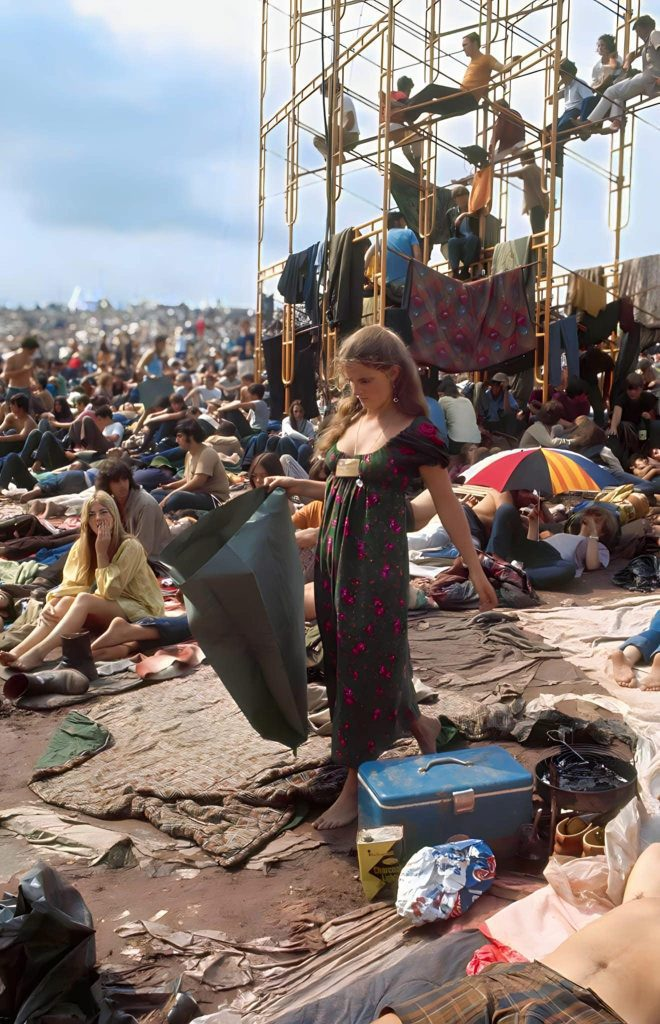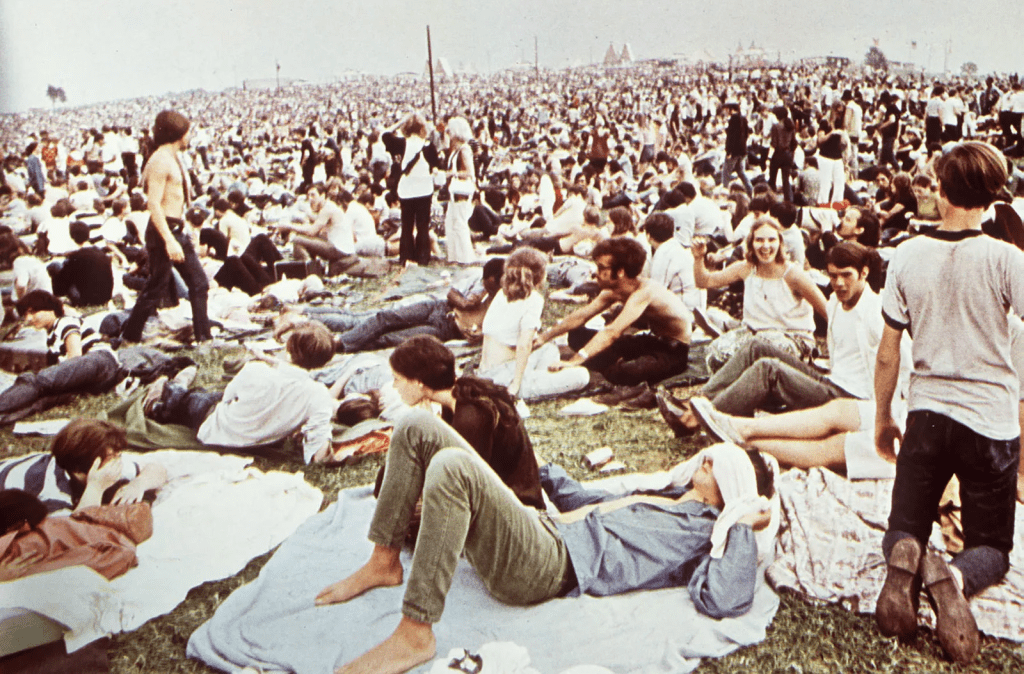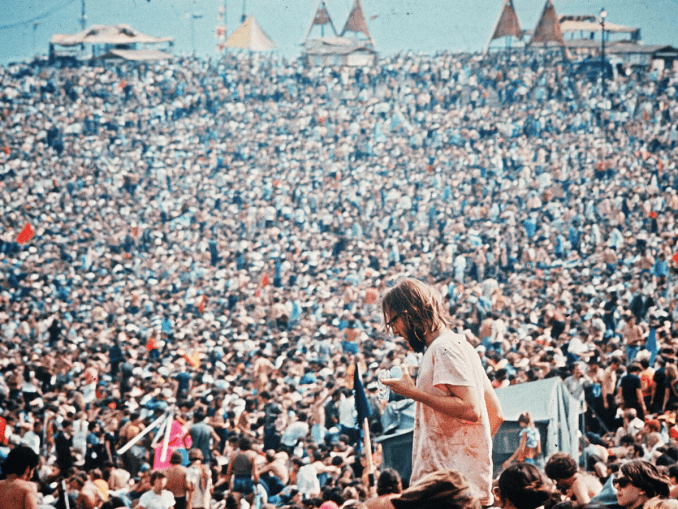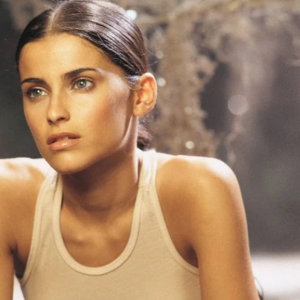In the summer of 1969, something extraordinary unfolded on a quiet dairy farm in Bethel, New York. Woodstock wasn’t just a music festival—it was a cultural revolution, a movement of peace, love, and unity. Held from August 15 to 18, this historic event attracted over 400,000 attendees, forever cementing its place as the pinnacle of counterculture and a defining moment of the 1960s.
More than just a weekend of music, Woodstock became the heartbeat of a generation seeking change and striving for a better world. Let’s dive into the elements that made Woodstock not just a festival, but an enduring legend.
The Vision Behind Woodstock

Woodstock wasn’t an accident; it was a dream realized. Billed as “An Aquarian Exposition: 3 Days of Peace & Music,” the event was the brainchild of four visionary organizers—Michael Lang, John Roberts, Joel Rosenman, and Artie Kornfeld. Their mission was to create a space where music, art, and community could thrive in harmony, embodying the ideals of the era: peace, love, and freedom.
Initially planned as a profit-making event, Woodstock spiraled into something far bigger. When over 400,000 people showed up—many without tickets—it quickly turned into a free festival. This shift wasn’t just logistical; it was symbolic. It reflected the ethos of the counterculture, where sharing and solidarity trumped monetary gain.
A Generation’s Heartbeat: The Soul of Woodstock
Woodstock was the epitome of the 1960s counterculture, a movement shaped by social upheaval, civil rights struggles, and vocal opposition to the Vietnam War. But Woodstock wasn’t about escaping reality; it was about confronting it with unity and hope.
Attendees—dubbed “Woodstock Nation”—embraced a spirit of community unlike anything seen before. Strangers became family, sharing food, shelter, and even clothes. Rain poured down, turning fields into mud pits, but instead of despair, there was laughter, music, and an unshakable sense of togetherness. It was as if the festival itself was a living, breathing example of what the world could look like if peace and love truly prevailed.
Legendary Performances That Defined the Era
Let’s talk music. Woodstock’s lineup wasn’t just impressive—it was iconic. The festival’s stage became the canvas for unforgettable performances, each one painting a vivid picture of the era’s musical diversity and creativity.
- Jimi Hendrix: His Monday morning rendition of “The Star-Spangled Banner” was a sonic protest against war and a hauntingly beautiful masterpiece.
- Janis Joplin: With her raw, electrifying voice, Joplin captivated the crowd, baring her soul with every note.
- Joe Cocker: His emotional performance of “With a Little Help from My Friends” brought chills to the audience, symbolizing the festival’s spirit of unity.
- The Who: Their high-energy set shook the crowd, delivering rock ’n’ roll at its finest.
- Richie Havens: Opening the festival with his impromptu performance of “Freedom,” Havens set the tone for the weekend—hopeful, powerful, and unifying.
From folk legends like Joan Baez to psychedelic rockers like Santana, Woodstock’s musical roster captured the era’s eclectic energy. The music wasn’t just entertainment; it was a rallying cry, a statement, and a soundtrack for change.
Overcoming Chaos: The Challenges of Woodstock

Woodstock wasn’t without its challenges. Heavy rains turned the venue into a muddy swamp, food supplies ran low, and sanitation facilities were woefully inadequate. To make matters worse, the sheer size of the crowd overwhelmed resources, leaving organizers scrambling to keep things running.
But here’s the magic: these challenges didn’t break Woodstock—they made it legendary. Strangers shared what little they had, from sandwiches to tarps. Local communities stepped in to provide food and medical aid. It was as if the adversity only strengthened the collective resolve of the attendees. Instead of chaos, there was compassion. Instead of division, there was unity. Woodstock became a shining example of human resilience and the power of togetherness.
Woodstock’s Legacy: More Than a Festival
Woodstock wasn’t just a one-time event; it was the birth of a cultural phenomenon. Its impact rippled far beyond the muddy fields of Bethel, influencing music, art, and activism for decades to come.
- Inspiring Future Festivals: Woodstock set the standard for modern music festivals like Coachella, Bonnaroo, and Glastonbury, proving that music could unite people on a massive scale.
- Cultural Symbol: To this day, Woodstock remains a powerful symbol of hope, peace, and freedom. It’s a reminder of what’s possible when people come together for a shared purpose.
- A Generational Movement: Woodstock captured the spirit of a generation that dared to dream of a better world, leaving an indelible mark on history.
Little-Known Facts About Woodstock
Did you know these fascinating tidbits about Woodstock?
- The festival was initially planned for Wallkill, New York, but last-minute permit issues forced the move to Bethel.
- Jimi Hendrix, despite being one of the headliners, played to a dwindling crowd early Monday morning.
- Over 70 artists were invited to perform, but some—including The Beatles—declined.
- Despite the enormous crowd, Woodstock was remarkably peaceful, with no reported acts of violence.
- The entire event cost $2.4 million to organize, but the aftermath left the organizers nearly bankrupt.
Why Woodstock Still Matters Today

So, why does Woodstock continue to captivate us more than 50 years later? It’s simple: it wasn’t just about music—it was about humanity. It was about standing up for what’s right, embracing creativity, and building a world rooted in compassion and unity.
In a world that often feels divided, Woodstock serves as a beacon of hope. It reminds us that even in the face of adversity, we can come together, share our dreams, and create something extraordinary. Its legacy isn’t just about the past—it’s a call to action for the future.
Conclusion
Woodstock was more than a music festival—it was a revolution of the heart and soul. It showed the world that music isn’t just sound; it’s a force that can inspire change, build communities, and spark hope. From the legendary performances to the spirit of togetherness, Woodstock 1969 was a moment that transcended time. Its echoes can still be heard today, reminding us to dream, unite, and strive for a world filled with peace and love.
Woodstock wasn’t just a weekend—it was a movement. And on that muddy farm in Bethel, New York, it became a legend that will never fade.


